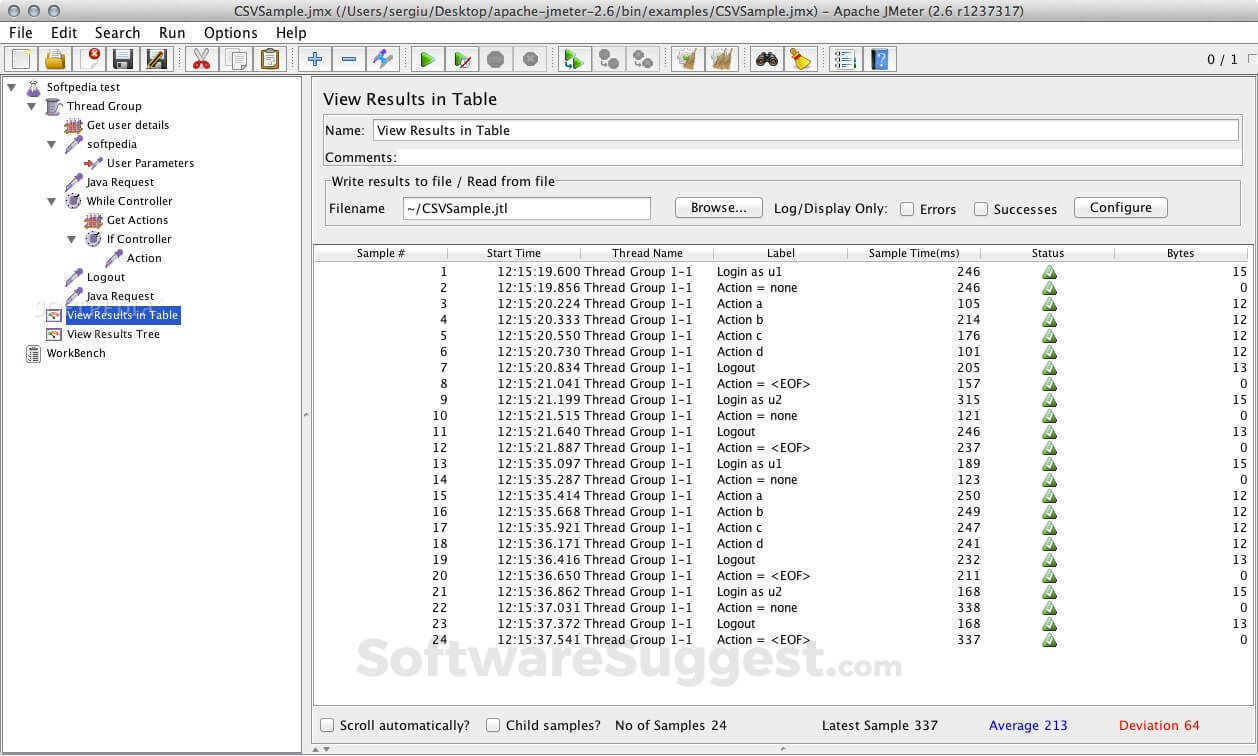
- Apache jmeter user.classpath jars full#
- Apache jmeter user.classpath jars code#
- Apache jmeter user.classpath jars download#
This Getting Started section assumes a functional YARN environment, starting from version 2.10.2. Flink deploys its JobManager and TaskManager instances into such containers.įlink can dynamically allocate and de-allocate TaskManager resources depending on the number of processing slots required by the job(s) running on the JobManager. This Getting Started section guides you through setting up a fully functional Flink Cluster on YARN.Īpache Hadoop YARN is a resource provider popular with many data processing frameworks.įlink services are submitted to YARN’s ResourceManager, which spawns containers on machines managed by YARN NodeManagers. Deployment Modes Supported by Flink on YARN.Hadoop MapReduce compatibility with Flink.Conversions between Table and DataStream.Conversions between PyFlink Table and Pandas DataFrame.
Apache jmeter user.classpath jars code#
This is how the JavaScript code within the BSF assertion could look like: //Get the jMeter variable and put it in a Javascript variable var password = vars.get(‘PASSWORD’) //the actual magic: the calling of a Java class function from within JavaScript //This is not an actual password encryption, only an example by help of a jMeter class available //You can find this class in ~jmeter/lib/soap.jar var hashedpassword = .Utils.cleanString(password) //Put the result back into a jMeter variable for further processing vars.put(‘HASHEDPASSWORD’,hashedpassword) //and since we’re not testing anything in this “BSF assertion”, we will always call it a success: tFailure(false) įull example, tested with Jmeter 2.3.2 (copy this into a test.jmx text file): false false false 1 1 0 1230116483000 1230116483000 false stoptest PASSWORD

Apache jmeter user.classpath jars download#
download the website’s JAR file, and put it in the jMeter java classpath.by using a class file to encrypt a username/password combination by using a custom java function:
Apache jmeter user.classpath jars full#
Using this function from within JavaScript is can be done by calling the function with it’s full path, and by adding “Packages.” in front of it.Įxample java class function use within jMeter, e.g. If you have a custom class in a JAR file provided by the website, the regular path to that class would be, and the function can be called “FunctionName”. And here’s the trick: JavaScript provides a bridging function towards java libraries, via the Packages method. Here’s the trick: JavaScript provides a bridging function towards java libraries, via the Packages method.īut jMeter does support a way to execute JavaScript functions, via the “BSF assertion”. JMeter does not process Javascript or applets embedded in HTML pages.”. There I was, with a need for executing a custom java class, and a clear FAQ on the jMeter site telling me explicitely “Does JMeter process dynamic pages (e.g. In one of my last assignments to benchmark a site, the site turned out to use java classes, with browser-based functions to create an encrypted password which in turn was sent to the web site for authentication. I’d rather have a slow web site where 8 web servers are running at 95% cpu, than a collapsed farm because end-users hit the F5 button after receiving a system error. My ultimate goal is not to find the moment where the site breaks, but to tune the site to a level where it actually never breaks, but only becoming slow, without collapsing via some snowball effect on system resources.

It’s funny to see how a site behaves (or dies) when the system is running out of resources. I use it to see how much end-users can log in to their banking environment and check their current account details, to validate how much inserts/sec can be handled by a database, the maximum amount of ldap lookups, etc.ĭuring testing, the most interesting things usually happen during the load test. JMeter is a great tool to perform several load and stress tests on websites, ftp servers, database servers and more.


 0 kommentar(er)
0 kommentar(er)
